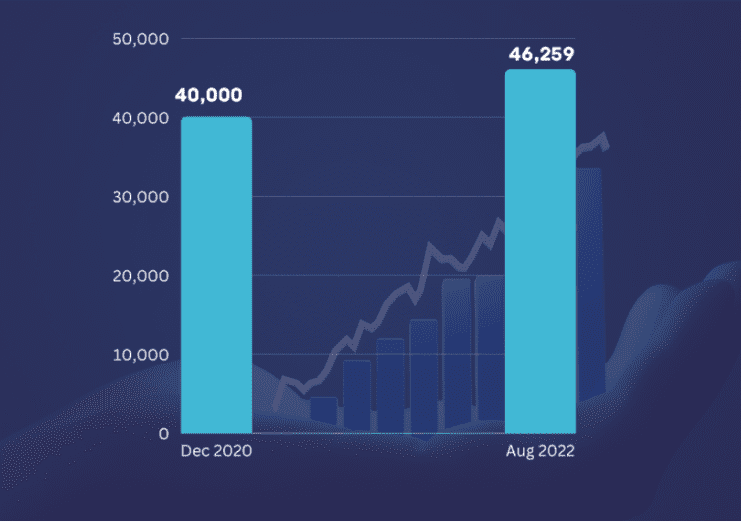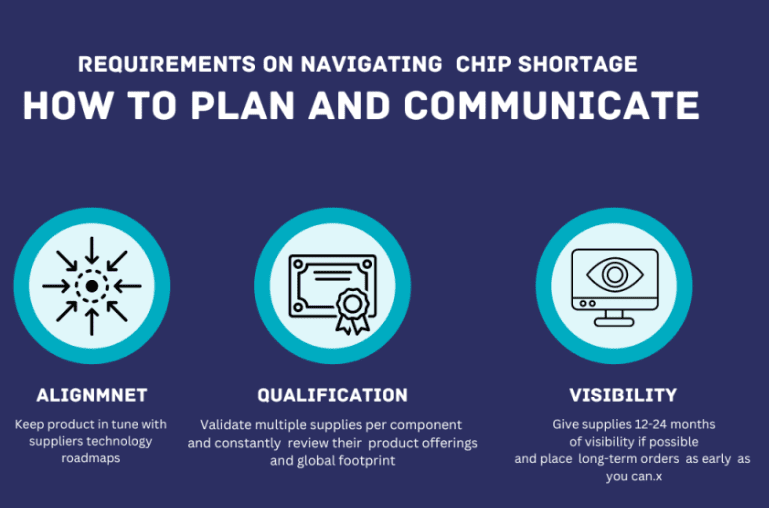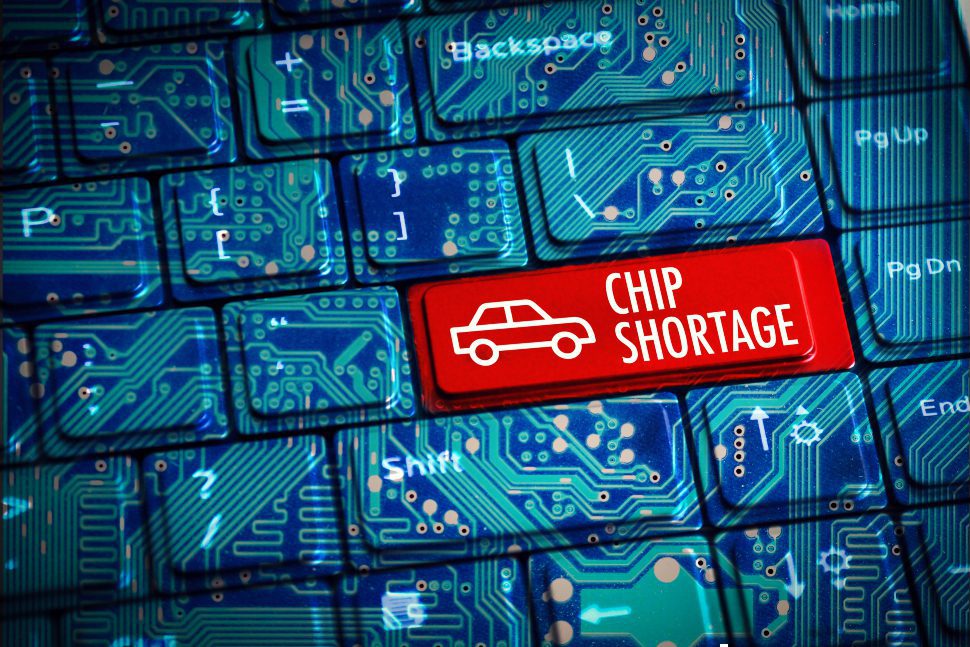New Update of the Global Chip Shortage 2022!

However, due to the increased demand in these other industries, there is a shortage of the semiconductors needed for their manufacture. Like most unpleasant things in our lives over the past two years, COVID-19 is the underlying cause that is prolonging and making the worldwide semiconductor shortage worse.

global chip shortage source image The Trumpet
Components are the starting point for the significant setbacks that the supply chain is currently suffering globally. Instead, they begin with a scarcity of components, especially semiconductors. I never would have guessed that the current chip market would have supplies that were only somewhat worse than those of a few previous markets. It is distinctive, though, in that a wide range of product families are affected by the imbalance between supply and demand.
We won’t see an end to the global semiconductor onslaught, despite stories to the contrary. We estimate the semiconductor market to be constricted far into 2023; the semiconductor market for complicated items (microcontrollers, microprocessors, and FPGAs, to mention a few) will be tight through 2023 as well, based on market data and conversations with our clients.
Simply put, semiconductor demand has never been higher. Between 2021 and 2022, the global semiconductor market is expected to grow from $595 billion to $639 billion.
The current boom in IoT, 5G, and the electrification of the automotive industry, particularly the rising demand for smartphones and laptops, is being sustained by a small number of integrated circuit (IC) planning segments. The demand for chips in consumer electronics, which had previously been strong, is anticipated to decline in 2022.
Those in the semiconductor industry are eager to keep the troubles of sudden production turnovers from occurring, though the chip market is searching for reduced quantities of inventory or inventory which will be unproductive. Facture of chips is rising in the different areas where demand is high, prompting semiconductor producers to search for higher amounts.
Like several adverse things in our life lately, there’s just one main contributor to the worldwide semiconductor shortage that is now worsening and prolonging it.
Intense demand caused by the COVID-19 pandemic is straining the distribution of raw material at all levels of the supply chain, starting with the manufacturer.
Why is there a chip shortage 2022?
A shortage is a reasonably uncommon occurrence in the microchip and integrated circuit manufacturing industries that when demand is higher than supply, and the current one has been particularly prominent since early 2021.
What is the cause of the ongoing global microchip shortage?
The worldwide shortage of memory, brought on by the coronavirus pandemic, led onto an array of difficult difficulties, including the propagation of newly concocted computer viruses, an escalating level of monetary unrest, and increased international tensions. Each link in the global supply chain remains extremely disrupted. There are not any signs that the disruption would be resolved in a timely manner.
The sudden rise in demand for tourism which began on account of the virus was so crankier and unpredictable that the demand for supply chains were at constant hazard of failure until this increased demand abated, which allowed excess processing capacity to be restored.
The market was devastated by the health issues during the early stages of the development of the COVID-19 pandemic, but a subsequent economic growth brought a return to healthy conditions. From the onset, the demand for semiconductors was very high, resulting from severe demand within the economy.The risk posed by semiconductor components is higher than ever, especially in the current incident highlighted by the continual shortages of chips, the longest times in analog vendor lines, and record price increases. With regard to the entire supply chain for semiconductors, the risk factor has been skyrocketing to hitherto unprecedented heights.
Lead times and prices have gone up in parallel because lead times have increased. Raw materials, foundries, and manufacturing have all become more expensive. On the flip side, other semiconductor manufacturers are striving to counteract increases in markup with their clients, who are being forced to pay ever-increasing markup in order to maintain their costs stable. The world’s largest supply of 300-millimeter wafers, TSMC announced in late 2019 that chip prices will increase by 6 in January 2023 after a 10 increase in high-end semiconductors, and by 20 in August 2021 following another 10 increase in less important chips. Some manufacturers are most affected by chip specific technologies such as automotive, the 5G IoT, and smartphones, as they are still in the developmental stages with many of these developments; therefore, they have decided to hedge their bets by making more severe investments in preparation for what is to come.
How have product shortages affected the markets?
The greatest disruption that the electronics industry has faced from the lack of semiconductors has been in the automotive sector. The abundance of chips used inside an average vehicle is exceptionally high, and invariably many thousands upon thousands of semiconductors are used to ensure that it functions correctly, safely, efficiently, and is connected to the Internet.
The problems facing the North American microchip market have their roots in 2018, according to a spokesman for TSMC who shared his insights with Time. Throughout the previous four years, smartphone sales escalated dramatically, with individuals making connections between even purchasing Smart Refrigerators and water from them.
Due to a lack of chips, the price of new cars is also increasing. The average price of a new car increased significantly between 2021 and 2022, peaking at $46,259 in August 2022 (it was $40,000 at the end of 2020). According to J.D. Power, consumer expenditure on new cars climbed by 13% during that period, despite the fact that supply constraints, inflation, and rising loan rates caused a 2.6% decline in demand for new cars between August 2021 and August 2022.
Due to the global chip shortage, the cost of a new car increased by 16 percent over the course of two years.

oem global chip shortage
A total of $210 billion in lost revenue is estimated to have been incurred by car OEMs as a result of the chip shortage in 2021, with many individual brands continuing to post lower-than-expected quarterly results and changing their long-term financial goals as a result in 2022.
Although it has taken longer, chip shortages are now having an effect on the smartphone market. After a decline in 2020, smartphone sales started to pick up again in 2021, however in Q3, global shipments fell by 6% compared to Q3 of 2020, as supply fell short of demand.
Technology research firm Gartner has reported that mobile device manufacturers are postponing the release of some of their most popular products to drive up sales from more expensive models. The sales of more affordable devices, however, have taken a hit. Most prominent smartphone suppliers aren’t expected to provide updates until 2022, based on documentation from the third quarter of smartphone sales by International Data Corp. But by February of 2022, it is anticipated that the majority of the prominent phones will be more widely available.
Companies are implementing IoT equipment using 5G networks in an attempt to implement the devices on this new wireless network. Because the shortage in cellular IoT chipsets and modules has increased, the demand for 5G components has been growing. Analysts project that an anticipated 6% decline in shipments in Q3 2021 will prevent this progress. Every device that has an Internet connection uses these processors, including smart meters at retail stores and point-of-sale systems. Strategies to consolidate 4G deployment could cause delays in the development of 5G, which could in turn prolong the transition to the next generation of cellular technology.
Given that there is only a limited supply of raw materials required for the fabrication of semiconductors, those materials are more likely to be used for the more sophisticated chips that are found in automobiles and smartphones before less complex microcontrollers and sensors, which are found in a lot of Internet of Things devices.It will take more time for IoT to restore the supply of chips needed by the market after demand declines. A Forrester study cited by the press in 2022 estimated the decline of the market for IoT-based chips. It’s still too early to say the whole effect of the chip shortage on the rollout of 5G networks will be seen. Nevertheless, some telecom firms warned the F.C.C. in June 2021 that a vital chip shortage might have a big effect on the rollout of 5G connectivity. Warnings for chip scarcity, mainly by long-term solutions, have gone in vain to many industries. The automobile industry, specifically, has made decisions based on individual assessments, such as eliminating the many technologically equipped features of new models.Mobile phone design firms used stockpiled microchips from the start of the crisis as a means to make it through the early phases of the crisis. The previously established electronic delivery system has now been established as a leading choice for mobile phone manufacturers. Starting with an effective supply chain strategy based on communication, visibility, and predictability will ensure survival through this crisis or any other.
What should we do about the global chip shortage?
The only sure thing is that nobody can unambiguously say that when current semiconductor market shortages will stop. Ignoring our own projections and market trends, we assume that global demand for semiconductors will remain high well into the future.
“Not soon” is not the answer to this time-sensitive question.
This problem doesn’t exist in every company, so it is not possible to find a simple answer. It’s absurd to try to apply one solution to the multitude of these difficulties, but specialist products made for demanding and difficult situations are completely different. There’s a huge difference between a leaky kayak and a powerboat, but scientists are solely responsible for developing vehicles that take in increasing amounts of semiconductors.
- Alignment: To enhance your business’s chances of receiving important components when you require them, your company’s product design teams should view your suppliers’ technological development plans and capital investment plans closely.
- Supplier qualification: Give yourself the option throughout each stage of the sales process to have a number of trusted suppliers on hand, and constantly evaluate them to add new vendors as your options are expanded. The required planning process will require you to consider whether suppliers simply have one location, while reducing the number of risks associated with utilizing suppliers that are mainly based in one particular area.
- Visibility: Provide your suppliers with as much economic data as possible so they can schedule their production and any possible further capital expenditures. Place long-term orders beyond the end of the year 2023 and even beyond 2024 to improve visibility for wafers and inventory planning, as certain suppliers need up to a year of notice.
- Increasing planning systems’ lead times and adding more buffered inventories:Your workflow, particularly with respect to unanticipated and/or emergency orders, must be adjusted to account for longer lead periods. It is essential to manage your flow so that it is not impacted by these problems. There’s going to be significant stress on support during unexpected or used pull-ins.

global chip shortqage how to plan
Diverse short-term and long-term methods are needed to keep up the shortage caused by the dearth of semiconductors. Numerous elements continue being lacking.
The economic crisis has eviscerated the power of the world’s supply chain. However, the complexities of the proceeding years have also highlighted the importance of stable reseller relationships and adept attuned purchase and marketing strategies. Positive consequences of what is going to happen this time can’t be forecast, but possessing a plan is the wisest wager.
you may also read our article STARTER KIT




